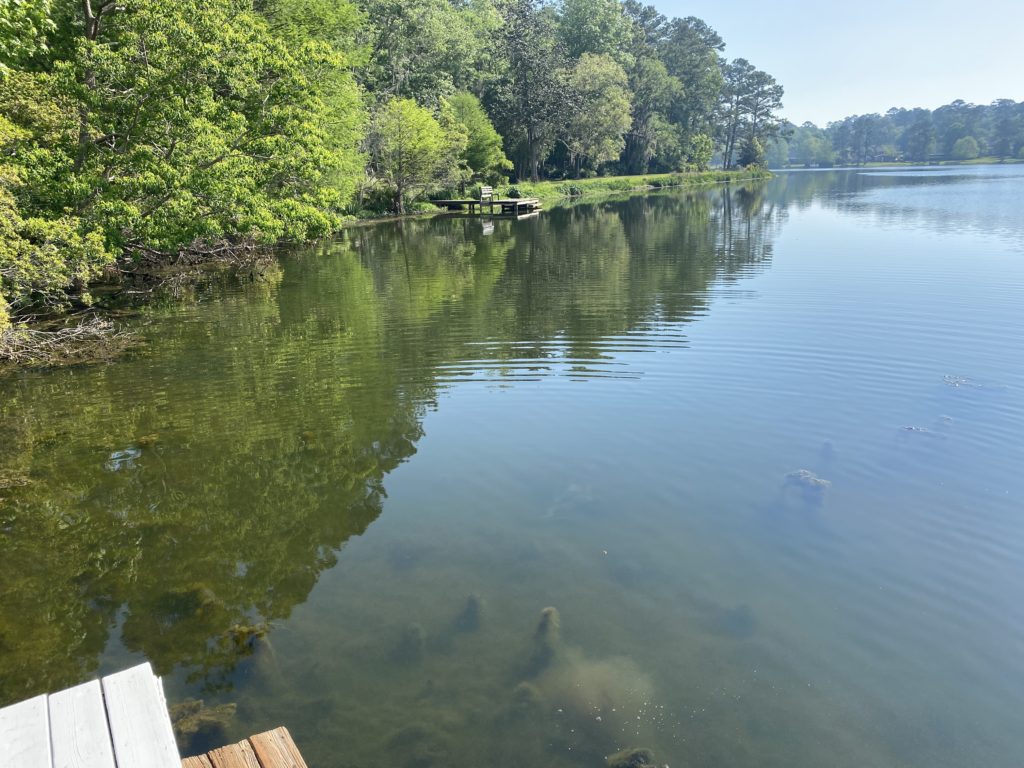In communication with Charlie Mesing, we had an exchange that I thought would be beneficial to update those with interest.
Here’s what I sent to Charlie…
Current status is good.- Surface floating FA algae mid-lake is non-existent.
- Large areas of clear bottom remain (although tough to see — see next item)
- Water column continues to carry a dense “diffuse green algae” — cloudy pea soup look. I think we like this – right?
- shoreline FA is minimal or non-existent except on the eastern shore where it is a bit heavy (3-5 feet extended into the lake from shoreline.
- Golf course arm is clear of floating FA and edges are relatively clear, but you can see that there is still quite a layer at 1.5-2 feet below the surface.
- Drain is clear and so the lake is down about 4 inches below the drain height due to evaporation and no significant rainfall. Recent rains have really not moved the needle at all.
- Water temperature at my dock remains “cool” to the touch.
- Fish are very happy!
I’ve received input “better than I’ve seen it since moving here” from a recent new resident and one of the original residents of the lake commented that they are very pleased with the state of the lake.
I received this from Charlie in reply — good input here…
All Thanks for the update Fred..I visited LBH about a week ago and F. algae looked under control (See attached photos)…Not gone but controlled..
 There is much still to do as we continue with the summer treatments as scheduled..
There is much still to do as we continue with the summer treatments as scheduled..
- Fred you ask about treatments…..We treat the ENTIRE shoreline EACH time we are out there…Every 4-6 weeks! However, we add more sometimes to some shallow areas that have the most dense floating F. algae.
- The herbicide concentration is high enough to kill normal F. algae for at least 75-100 ft in 4-5 ft of water as it disperses from the shoreline.. Wind direction/strength sun shine, and air temperatures can effect the efficacy of the herbicide. Our F. algae (Lyngbya) is the most difficult one to control in the state.
- Home owners should continue to protect shoreline vegetation and help it expand around the lake…If shoreline vegetation expands just 3- 5 ft everywhere, that alone could help reduce filamentous algae production in other areas of the lake..
- Fertilize yards only as needed. Try to look at the rain forecast before fertilizing.
- The current KLP plan is to have 5 more lake-wide treatments every 4-6 weeks as needed…depending on F. algae growth. Hopefully, these 5 treatments will get us through mid to late October 2020.